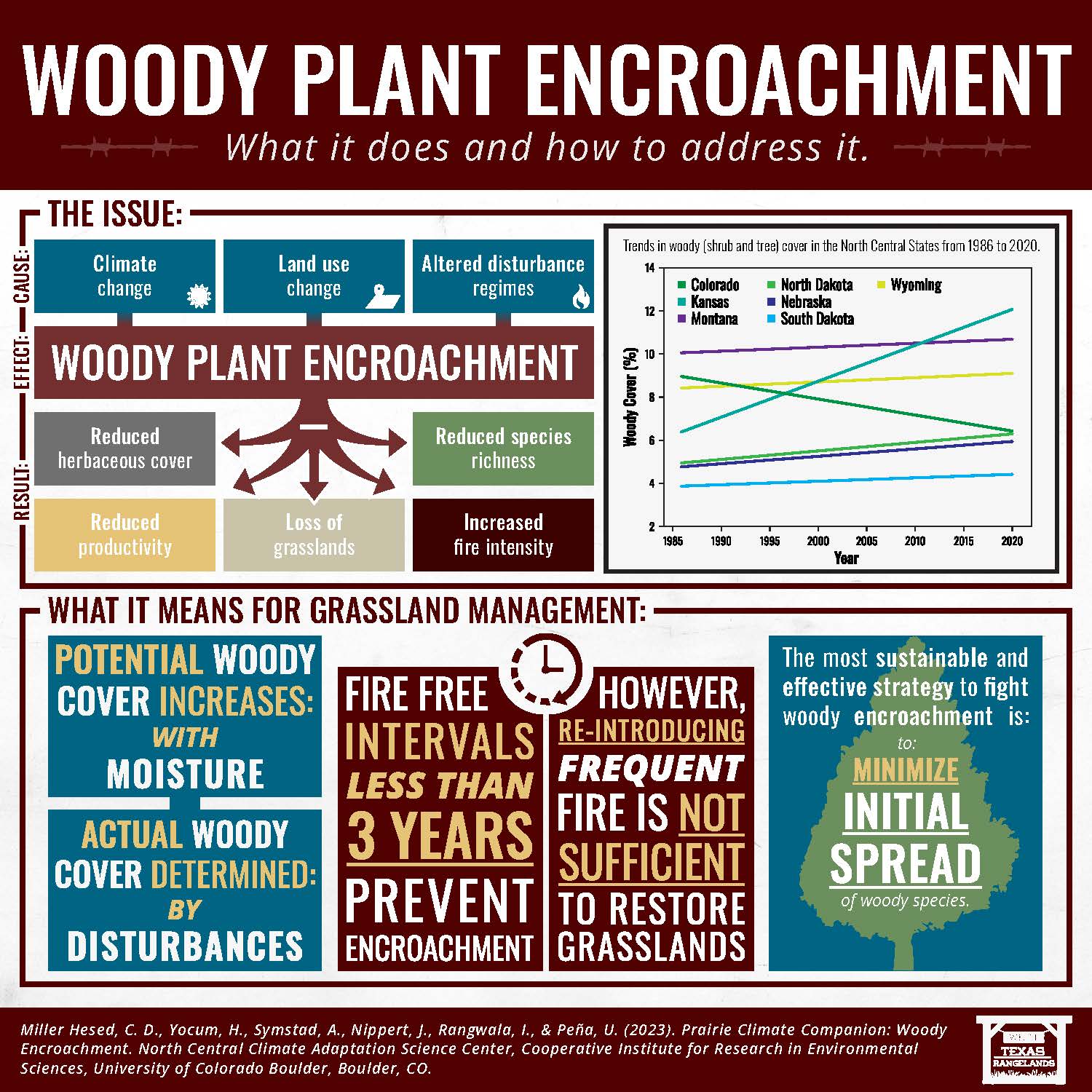 Extreme climate swings, lengthened fire seasons, drought, floods, overgrazing, fragmentation, land-use change, urbanization, and altered disturbance regimes has created an increase in woody plants, commonly referred to as woody plant encroachment or (WPE). Woody encroachment has become a global phenomenon in nearly all grassland ecosystems. We have seen the devastating results of WPE in Texas grasslands and savannas and as we learn from our North Central partners (CO, KS, MT, ND, NE, SD, and WY) many of these states are on a similar trajectory of plant community transition. Through the work of the North Central Climate Adaptation Science Center and the Rangeland Analysis Platform, other states can learn from our Texas lessons of WPE and aim for fire return intervals that minimize initial spread of woody species in grasslands.
Extreme climate swings, lengthened fire seasons, drought, floods, overgrazing, fragmentation, land-use change, urbanization, and altered disturbance regimes has created an increase in woody plants, commonly referred to as woody plant encroachment or (WPE). Woody encroachment has become a global phenomenon in nearly all grassland ecosystems. We have seen the devastating results of WPE in Texas grasslands and savannas and as we learn from our North Central partners (CO, KS, MT, ND, NE, SD, and WY) many of these states are on a similar trajectory of plant community transition. Through the work of the North Central Climate Adaptation Science Center and the Rangeland Analysis Platform, other states can learn from our Texas lessons of WPE and aim for fire return intervals that minimize initial spread of woody species in grasslands.
Increases in woody cover show a direct loss of grassland prairies, including quality forage, productivity, species richness, and a reduction in herbaceous cover. In addition, there is also a reduction in habitat for grassland birds.
In the North Central region, woody cover is determined by disturbance and browsing and fire suppresses the spread of woody species. In the tallgrass prairie, fire-free periods not exceeding 3 years prevent woody encroachment. If fire frequency were to decrease, encroachment rapidly occurs with seedling explosions. Once this happens re-introducing frequent fire periods may not be enough to reverse the ongoing transition from grassland to shrubland.
The most efficient strategy for woody encroachment is to minimize the initial spread of woody species into grasslands by using prescribed burns to kill seeds and seedlings and prevent the establishment and rapid transition to woodland.
For more information and additional resources, be sure to check out the publication here!